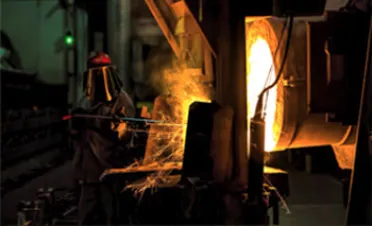stamping steel parts
Stamping Steel Parts An Overview of the Process and Applications
Stamping steel parts is a crucial manufacturing process widely used in various industries, including automotive, aerospace, electronics, and machinery. This method involves shaping metal sheets into specific forms and dimensions through the use of dies and presses. With the growing demand for precision-engineered components, stamping has evolved significantly, ensuring efficiency and accuracy in creating complex shapes.
The Stamping Process
The stamping process begins with preparing a metal sheet, usually made of steel, which is selected based on its properties and the requirements of the final product. The sheet is then fed into a stamping press, where it undergoes a series of operations, including blanking, piercing, bending, and forming.
1. Blanking This initial step involves cutting the metal sheet into flat shapes called blanks. Blanking is a critical step as it determines the outline and size of the final part. 2. Piercing After blanking, the next stage is piercing, where holes are created in the blank to facilitate further processing or assembly. This operation is essential for parts that require fastening or additional features.
3. Bending and Forming Once the blank is cut and pierced, it may be bent or formed into its final shape. This is done using specialized dies that apply force at specific locations, allowing for the creation of complex geometries.
4. Finishing After the basic stamping process, parts may undergo additional finishing procedures such as deburring, trimming, and surface treatment to enhance their durability and aesthetics.
The entire process can be highly automated, leading to significant cost savings and efficiencies. High-speed stamping machines can produce thousands of parts per hour, making this method ideal for large-scale production.
Materials Used in Stamping
While steel is the most common material for stamping, other metals such as aluminum, brass, and copper can also be used. The choice of material often depends on the application's requirements, such as strength, weight, corrosion resistance, and cost. Steel, particularly high-strength low-alloy (HSLA) grades, is often preferred for its excellent mechanical properties and versatility.
Applications of Stamped Steel Parts
The applications of stamped steel parts are vast and diverse. Here are a few key industries that benefit from this manufacturing technique
stamping steel parts

1. Automotive Industry Stamped parts are integral to the automotive sector, where they are used in body panels, frames, and structural components. The precise nature of stamping allows for the production of lightweight parts that enhance vehicle efficiency and safety.
2. Electronics In electronics, stamped metal parts are used in connectors, housings, and brackets. Their precision and ability to create complex shapes make them ideal for various electronic devices.
3. Aerospace The aerospace industry requires components that meet strict safety and performance standards. Stamped parts are used in aircraft structure, components, and systems, contributing to the overall integrity and efficiency of flights.
4. Industrial Machinery Stamped steel parts are also critical in machinery manufacturing, where they serve as operational components, housings, and structural elements.
The Advantages of Stamping
Stamping offers numerous advantages, including
- High Production Rate The ability to produce large quantities of parts quickly makes stamping a cost-effective choice for mass production.
- Precision and Consistency Modern stamping techniques ensure that parts are produced with tight tolerances and uniformity, which is essential for applications requiring exact specifications.
- Versatility Stamping can accommodate a wide variety of shapes and designs, making it suitable for many industries.
- Material Efficiency The process generates minimal waste, as the metal sheet is utilized effectively.
Conclusion
In summary, stamping steel parts is a sophisticated and highly efficient manufacturing method that plays a critical role across various industries. With advancements in technology, the stamping process continues to improve, enabling the production of increasingly complex and precise components. As industries evolve and the demand for high-quality parts grows, stamping will undoubtedly remain a cornerstone in manufacturing, driving innovation and excellence.
-
Precision Casting Prototypes and Engineering Inc – Innovating Global Manufacturing SolutionsNewsNov.24,2025
-
Precision Casting Facility: Advanced Manufacturing for Global Industries | Hairun SourcingNewsNov.23,2025
-
Leading Precision Casting Corporation: Quality Metal Components for Global IndustryNewsNov.23,2025
-
Precision Cast Rods: Definition, Applications & Future Trends in ManufacturingNewsNov.22,2025
-
Precision Cast Iron Surface Plate: The Backbone of Industrial Accuracy and QualityNewsNov.21,2025
-
Precision Aluminum Investment Casting: High-Accuracy Manufacturing for Modern IndustriesNewsNov.20,2025















